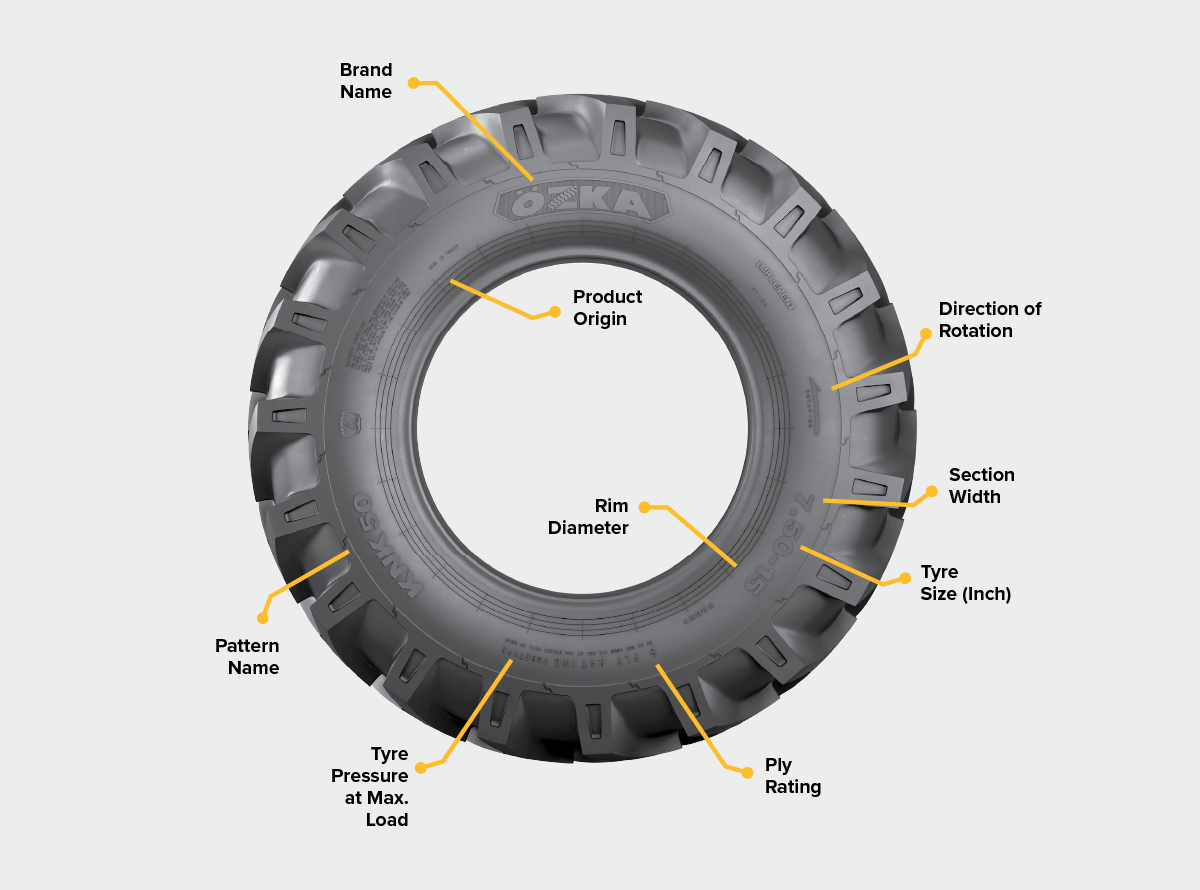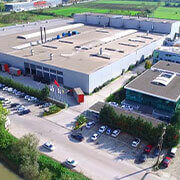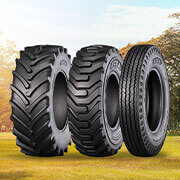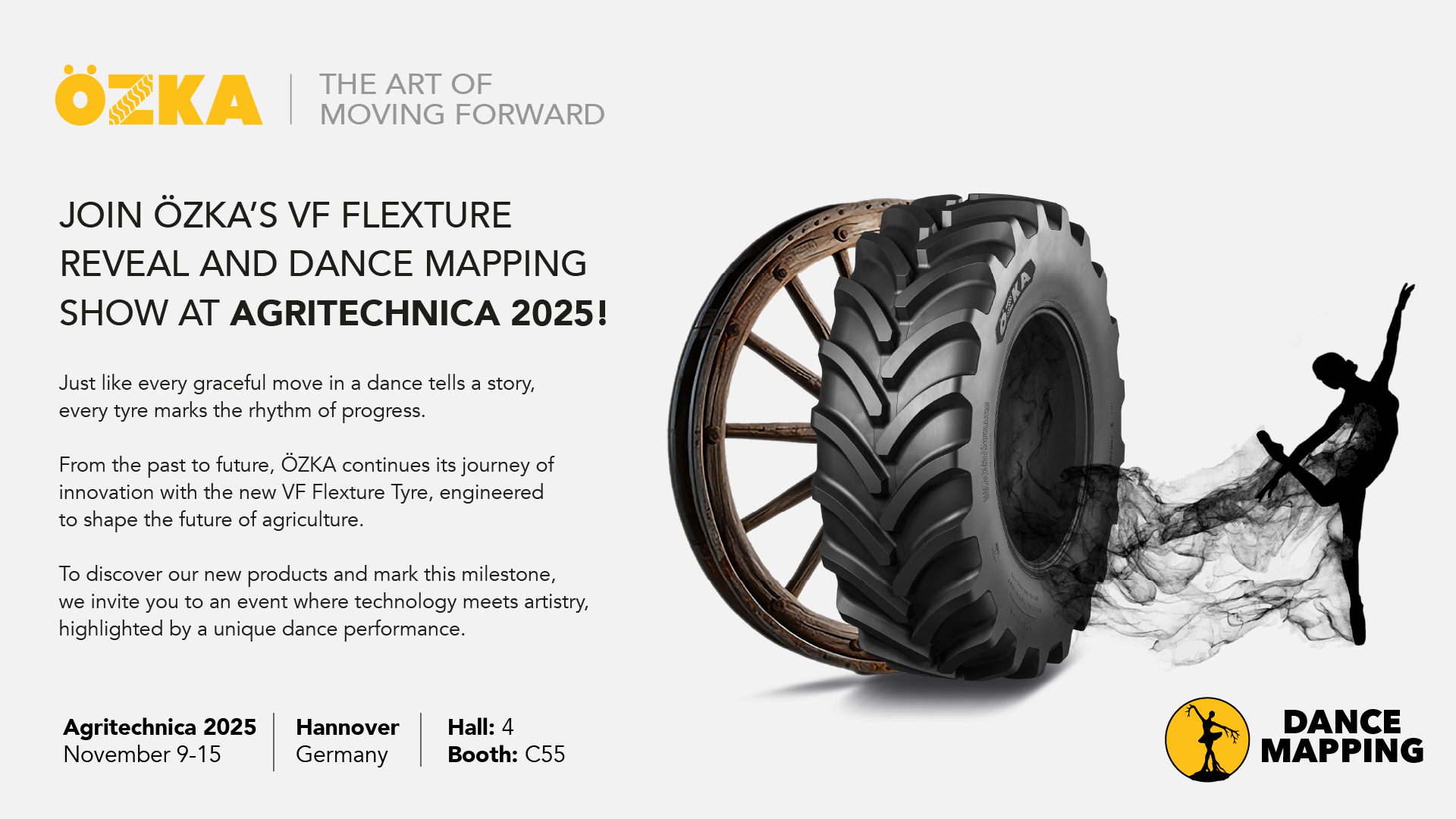TYRE INFORMATION

STORAGE OF TYRES
Tyres should be stored indoors, should be kept away from ozone-creating environments such as sunlight and electric motors. Tyres should be protected from contact with chemicals and moisture, should be stored in an upright position without interfering with the load.
MOUNTING AND DISMANTLING OF THE TYRES
Use the rim, outer and inner column dimensions of which are specified in the vehicle owner's manual. Make sure the rim is clean. For new tyres, use new inner tubes, columns and tubeless valves depending on the type. Make sure that the inside of the tyre is clean. Have the tyre mounting done by suitable machines and experts. Center the tyre fitted on the belt, apply a special lubricant solution to the heels and rim. Never use detergents, oils and silicones. Make sure the valve and cap are clean and new. After taking the necessary safety precautions, inflate with dry air according to the values in the instruction manual. (For safety reasons, the inflation cage should be used.)
POINTS TO BE CONSIDERED IN TYRE USE
Tyre Air Pressure:
Pressures other than those specified in the catalogs will shorten tyre life. When the tyres are cold, the tyres should be checked every fifteen days with a solid air gauge.
Overloading:
The load values specified in the vehicle catalog must not be exceeded.
Mechanical arrangement: the front arrangement, balance and brake settings must be checked according to the recommendations of the vehicle and tyre manufacturers.
Rough Road Conditions and Misuse:
Sudden braking, ramps and pits shall damage the tyre.
Tyre Replacement:
Make sure that the tyres are the same size. Do not match the new and used tyres. Do not use winter tyres outside the winter season. Do not use for safety reasons when the tread depth of the tyres exceeds the safety limit. Replace your old tyres with a new one.
What are the Main Parts of a Tyre?
Tyres consist of 4 main parts. The part of the tyre that is in contact with the ground and where there is the pattern is called the tread or base, the side of the tyre where the tyre information is located is named as sidewall, the part of the tyre sitting on the rim is called heel or palate, and passage area of the back and sidewall is called shoulder.
Tread : The area of the tyre in contact with the ground.
Sidewall : The side of the tyre between the heel and shoulder area, providing flexibility to the tyre and having marking and identification information.
Heel: This is the area of the tyre that comes into contact with the rim and allows it to be firmly attached.
Shoulder: The area where the back and sidewall meet and which is made of thick rubber.
Cross-Cutting Tyres:
It is the first body structure used at the beginning of tyre technology. The textile-based "cord" yarns that form the body of these tyres are placed on top of each other diagonally at an angle of 35-40 degrees to the tyre direction. This structure is also called diagonal or conventional. It is specified by "-" or "D" in the dimension definition.
Tubeless and Tube-Type Tyres:
It is the pressure of the air that is compressed between the rim and the tyres, which meets the reaction force corresponding to the load in the vehicles. Tyres are only jackets where the air pressure is compressed. The compressed air pressure is maintained by the liner layer which is applied to the inner tubes or the inner side of the tyres and which provides sealing. Tubes used with inner tubes are called Tube-Type, tubeless tyres used without tubes are called Tubeless tyres.
Factors Affecting Performance and Life of Tyre
Air Pressure :
Improper air pressure causes irreparable and premature wear of the tyre, as well as a damage that cannot be repaired in the future. The air pressure should be measured when the tyre is cold and the air pressure values specified by the vehicle manufacturers must be observed.
Thread Depth:
The tread area is the part of tyre that presses on the road. Traction decreases as the tyre ages. Over time, the pattern on your tyre will wear out and become unusable. Using tyres with a tread depth of less than 3.0 mm is dangerous for life and property and is prohibited by law in many countries.
Load Amount and Loading Form:
Loading on the vehicle that exceed vehicle carrying capacity determined by the vehicle manufacturer causes rapid heating of the tyre and rapid wear to sidewall, shoulder and bead areas. Unbalanced loads also have a negative impact on tyre life.
Brake Adjustments:
Have your brake systems checked at intervals recommended by the vehicle manufacturer. Unbalanced brakes cause irregular and rapid wear on the tyres. In sudden and hard braking, the force distribution will be different as per the tyre, so the possibility of block type wear increases.
Tyre Selection According to Vehicle Conditions:
The size and ply rating of the tyre specified in the vehicle manual must be used.
Tyre Performance and Its Life:
In addition to these factors, the driving habits of the vehicle user may vary depending on other factors such as the level of maintenance of the vehicle









